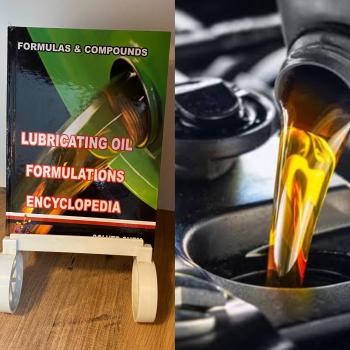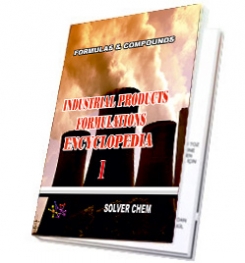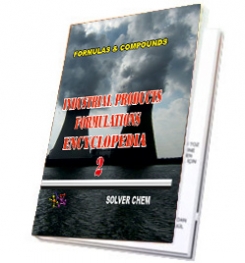
Lubrication plays a key role in the life expectancy of an engine. Without oil, an engine would succumb to overheating and seizing very quickly. Lubricants help mitigate this problem, and if properly monitored and maintained, can extend the life of your motor.
Where Engine Lubrication Begins
The process of lubrication in an internal combustion engine begins in the sump, commonly referred to as the oil pan. From here, the oil is pulled through a strainer, by the oil pump, removing larger contaminants from the mass of the fluid. The oil then goes through the oil filter. It is important to note that not all filters perform the same. A filter’s ability to remove particles is dependent upon many factors, including the media material (pore size, surface area and depth of filter), the differential pressure across the media, and the flow rate across the media. Oil is pumped through passageways to the various components of the engine such as the cam, main bearings, rod, pistons, etc. Gravity then pulls the oil back down to the bottom of the motor to drain back into the sump, and the cycle repeats.
Makeup of Oil
To appreciate the full impact of the engine lubrication process, you must understand how oils are formulated. All engine oils have two components: additives and base oil. The total volume of additives in motor oil can range from 20 to 30 percent, depending on brand, formulation and application. These additives can enhance, suppress or add properties to the base oil.
A typical additive package found in engine oil would include a detergent and a dispersant. These two additives work together to help rid the engine system of deposits caused by the burning of fuel and contributed to by blow-by gases. Dispersants and detergents are small particles that have a polar head and an oleophilic tail. The polar heads are attracted to contaminants within the oil and surround them, forming a structure called a micelle.
Soot is a good example of a deposit that is controlled by detergents and dispersants. Soot particles are enveloped by dispersant particles, forming a micelle, and are kept from attaching to metal surfaces. They are moved in this state through the oil system until they are removed by the filter. This also prevents a process known as congealing. During congealing, soot particles begin to stack upon each other or congeal into a larger particle. Smaller soot particles that could pass through components without interrupting the fluid film can congeal to make larger particles, which may disrupt the film and damage surfaces.
Most vehicle engines use some form of multi-grade oil. This type of oil has an additive called a viscosity-index (VI) improver. A common example would be 10W-30 or 5W-40. These VI improvers are long-chain organic molecules that change shape as the temperature of their environment changes. When in cold environments (engine startup), these molecules are tightly bound. As the oil heats up, they begin to stretch out. This allows an oil to flow more readily at colder temperatures but still maintain an acceptable viscosity and, more importantly, a lubricating layer in the operating temperature range.
Another common additive would be an anti-wear (AW) formula. AW additives have particles that are shaped similar to detergents and dispersants, but the polar heads of these molecules are attracted to metal surfaces. Once attached to a metal surface, AW additives form a sacrificial layer that protects the surfaces beneath them from degradation under boundary conditions. Zinc dialkyldithiophosphate (ZDDP) is a common form of this additive.
Oil Breakdowns
Engine oils are subject to several types of failures. Contamination poses a significant problem within engines. Environmental contaminants can expedite the process of oxidation and cause premature filter plugging. Fuel contamination can lower the viscosity of the oil, leading to boundary conditions within the engine’s moving parts. Glycol (antifreeze) contamination does the opposite, increasing viscosity so the oil doesn’t flow as well into places that require thinner oil. Overheating and long drain intervals can also hasten the degradation of the oil and result in oxidation and poor lubricity.
In addition, additive shearing can create engine lubrication problems. Over time, VI improvers are sheared down, reducing the oil’s viscosity at operating temperatures. The AW and dispersants/detergents are no different. They become depleted, and the remaining molecules are not as effective. An oil change is then needed. This can be caused by extended drain intervals and poor maintenance.
When it comes to engines, the same principles of lubrication apply. The lubricating film must be maintained to ensure proper operating conditions and to achieve the maximum life of the engine’s components. Changing oil regularly and sustaining appropriate fluid levels are the keys to overall engine health and lifespan.

any engine oil
LUBRICATING OIL
FORMULATIONS
ENCYCLOPEDİA
is enough.
LUBRICATING OIL FORMULATION ENCYCLOPEDIA has many formulations of greases, complex grease, lithium grease production,sodium greases formula, formulation,multigrade engine oils manufacturing process,motor oils making, gear oil production, synthetic engine oils,semi synthetic motor oils,gasoline oils,diesel oils production process,composition of turbine oils,transmission oil manufacturing, production of cycle motor engine, tractor oils,mineral based motor engine production,heat transfer oils, slideway oils formulation, formulations, cutting oils formula,formulas grinding oils,mould oils manufacturing process and etc.
All lubricating oils in the encyclopedia are producible easily.You need no help and no technıcal support. The encyclopedia is enough to produce lubricating oils and engine oils itself.
LUBRICATING OIL
FORMULATIONS
ENCYCLOPEDIA
is written clear and understandable.


HARD BOOK E BOOK
RELATED TAGS: What is engine oils,making synthetic diesel engine oil,semi synthetic engine oil manufacturing process,mineral based engine oil production, heavy duty engine oil formulation,high performance engine oil formula,formulas,properties of motor oils,synthetic motor oil msds, analysis,composition of engine oils,additives of motor oils, mineral engine oil formulation,make semi synthetic diesel engine oil, base oils,synthetic base oils,light neutral oil,heavy neutral oil,performance additives package, properties of diesel engine oil, how to formulate engine oils, types of engine oils, synthetic motor oils,ingredients of engine oils,compounds of engine oils, index of motor oil,characteristic of motor oils,application of motor oils,combination of synthetic engine oils.
SOLVERCHEM PUBLICATIONS

|
|

|
|

|
|
